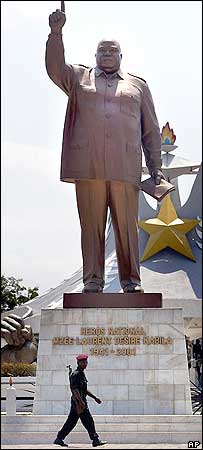Last week we mentioned the curious case of Kim Kwang Jin, a high-ranking defector who helped raise money for the North Korean government who is spending a year here in DC at the Committee for Human Rights in North Korea. This week he spoke to Fox News and painted a broad picture of the DPRK’s financial strategy:
Trim and sharply dressed, his bushy head of hair dyed jet black, the 42-year-old Kim, once an English professor at a computer college in Pyongyang, speaks polite and fluent English, albeit in a halting style and with a heavy accent.
An interview with FOX News in late June marked Kim’s first with an American TV news channel. Kim recounted his extraordinary experiences working for the Northeast Asia Bank and Korea National Insurance Corporation, where he handled accounts worth hundreds of million of dollars.
He described two economies in North Korea: one administered by the North Korean Cabinet and nominally oriented toward serving the needs of the people; and a “Royal Court economy,” financed by illicit enterprises worldwide and providing the stream of hard currency that keeps Kim Jong Il, and his cronies, ensconsed in power and luxury.
“Kim [Jong Il] himself enjoys a lavish lifestyle,” said Kim Kwang Jin. “He is giving gifts to his associates: the Mercedes-Benz[es] and whiskeys, first-class room and [air]fare from Japan. Everything’s provided to his aides….Kim Jong Il himself is now ruling the country with [the] dollar, hard currency….Without hard currency they cannot rule the country.”
Kim Kwang Jin described a society in which bankers demand bribes from clients, doctors from patients, professors and teachers from students.
“Everybody tries to make use of their position, their authority…to survive,” Kim said.
The former banker said the regime’s largest source of hard currency comes from the clandestine manufacture and sale of weapons of mass destruction. After that comes the regime’s multibillion-dollar insurance fraud business, in which the authorities stage arson and bogus accidents to collect multimillion-dollar payouts from international banks and insurers.
“The state — Kim Jong Il himself — controls all these funds,” said Kim Kwang Jin. “It is funneled to him. And then he’s using all these revenues according to his regime’s priorities, which are now the missile program and nuclear weapons development.”
Kim Kwang Jin believes the North Korean government has never negotiated in good faith with the United States and its allies at the Six-Party nuclear disarmament talks.
“The North Koreans are coming to the table not for negotiation; they are there for winning, for implementing their strategy,” he said. To grant meaningful concessions at such negotiations, or to enact meaningful internal reforms toward democratization, would, Kim says, be tantamount to “suicide to the regime.”
Yet Kim also believes financial sanctions can compel better behavior from Pyongyang, and cites as an example the Treasury Department’s targeting from 2005 to 2008 of Banco Delta Asia: a bank in Macau, also known as “BDA,” through which the North Korean regime once transferred large sums. It was during this period, when Banco Delta Asia faced international restrictions, that the North made its most far-reaching concessions in the Six-Party Talks, only to renege on them once the sanctions were lifted.
“The BDA case was a frightening thing to the regime,” Kim said. “It was a blow to [Kim Jong Il’s] personal funding, to the economic sector which is now supporting the regime. And even the national economy, the people’s economy run by [the] Cabinet, is influenced by this BDA case.
Here is his interview on Fox News via YouTube.
Read the full story here:
North Korean Defector Describes Inner Workings of Isolated Regime
Fox News
James Rosen
7/2/2009

